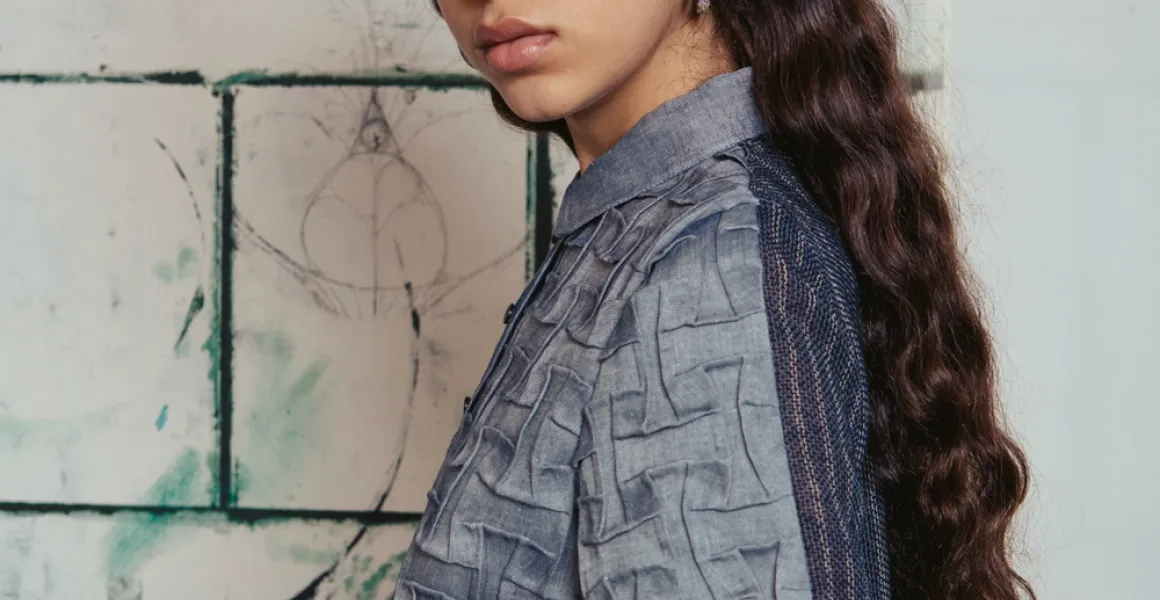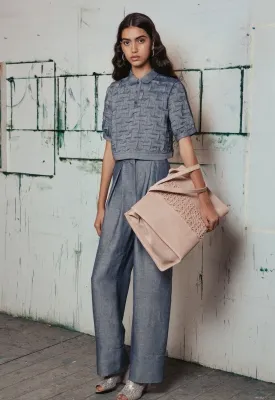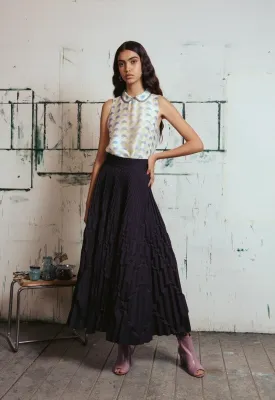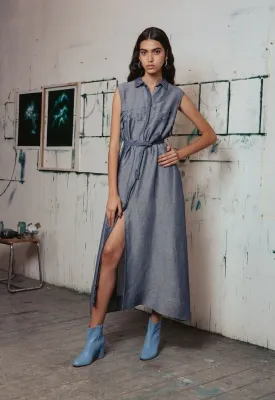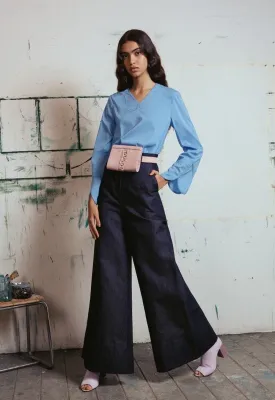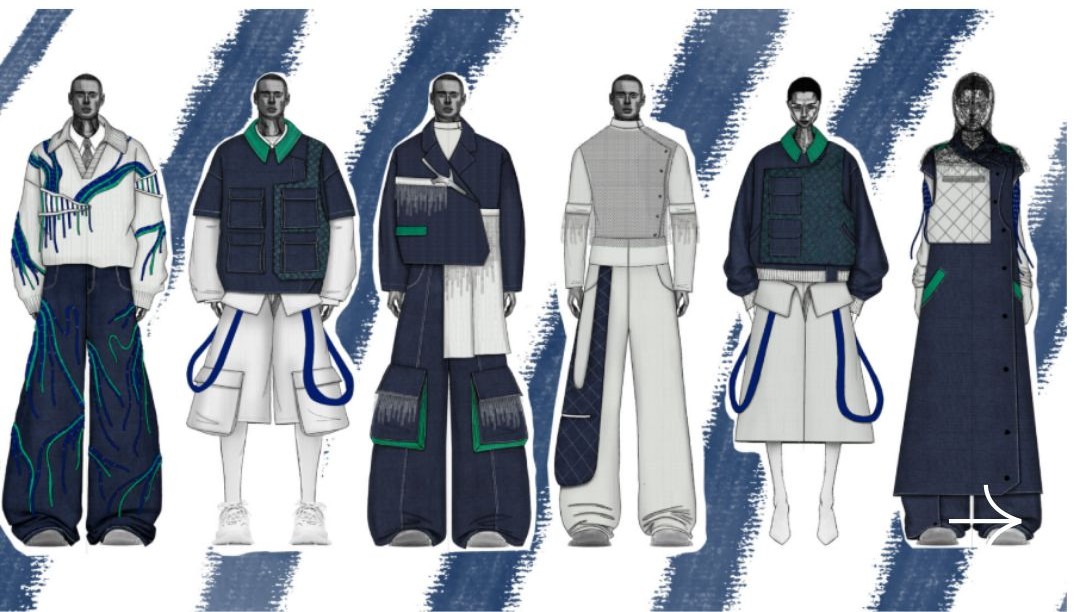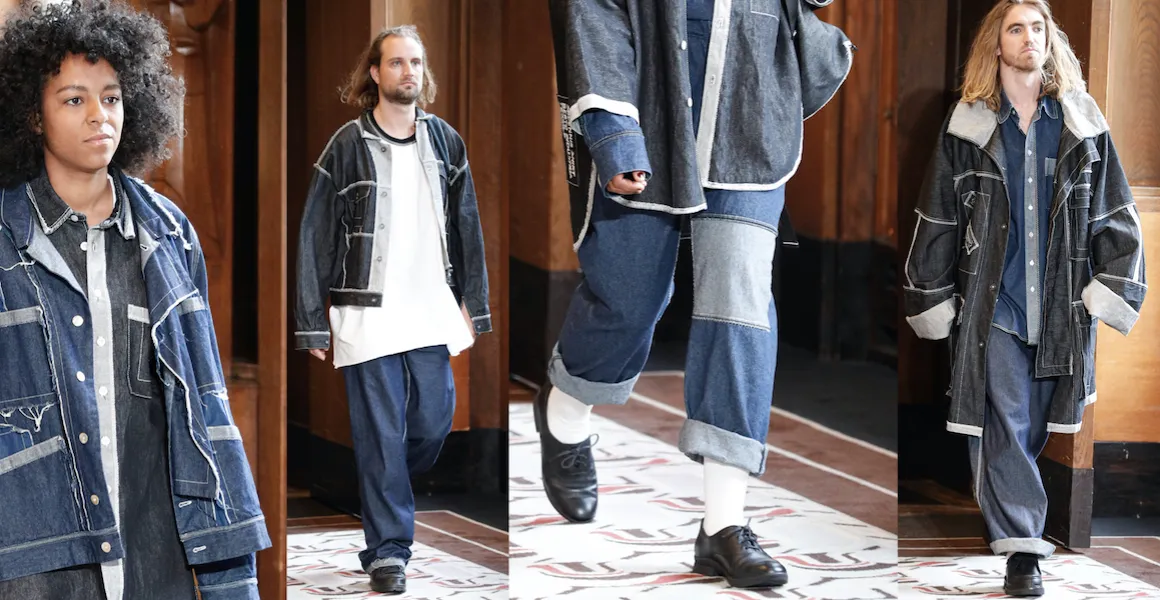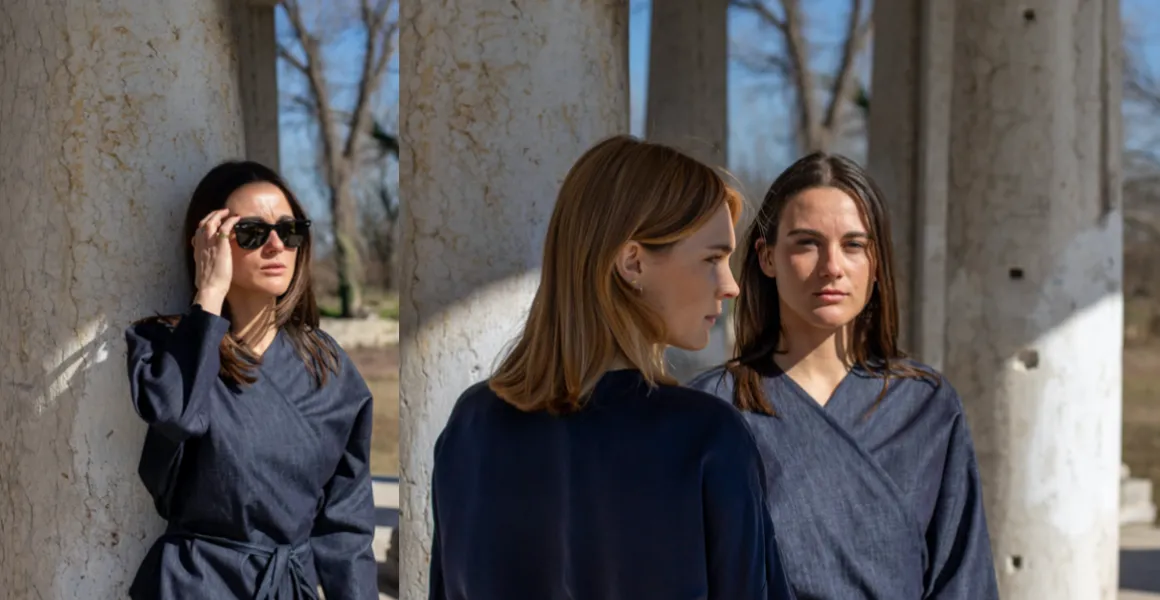What was your first project?
I started with practical experience, selling my first garments on Etsy and trying to test public feedback. However, my first official project, and the one I will always hold dear to my heart, was the demi-couture capsule that I created as my final work for the Master’s in Haute Couture at the Accademia di Costume e Moda in Rome, which was showcased at the Fashion Graduate in Milan. I think the emotion of your first runway show is something you never forget!
The creative process: do you work instinctively or plan every single step? Where do your ideas come from?
I work very instinctively, even though I periodically promise myself to become more systematic – and I never do. However, there is a certain order in my chaos: I always carry a notebook where I write down all my ideas, even if they don’t seem to make sense at first. And I have an album on my phone where I collect snapshots of everything that catches my eye, whatever it may be. When I need to design a collection, I take a few days to fish through this chaos and… Suddenly things become clear and I realize there’s often an underlying meaning! Of course, creating a collection also has a more analytical part, but that comes later.
How did you come into contact with Berto?
Elevating everyday clothing to add poetry to the ordinary is one of the fundamental ideas I work with. I had already decided that for my SS 2019 collection I would pleat denim, treating the quintessential streetwear fabric like a haute couture material and playing with contrasts. To realize my project, I needed a lightweight denim with a significant polyester component that could hold the pleating. I did some research and discovered your wonderful company. When I then discovered that the denim was certified, and learned about the Berto For Young Talents project… You won me over!
Which Berto fabrics have you worked with for your project and collections?
The fabric I used most extensively in this collection is Prince Blu 85, which proved to be an excellent ally in creating the half-circle pleated skirts. For some skirts, like the pencil skirt, I also used Agata Shade to achieve a softer result. Finally, for the pants, trench coat, shirtdress, and some blouses, I used Berlino Blu and Berlino 45: the linen blend composition of this fabric worked excellently for a spring/summer collection, and helped me achieve my goal by giving the denim that slightly couture feel I was looking for.
“Less but better” can be read as an endorsement of a certain degree of purity in design but also in fashion design. It can also be understood as an environmental message about reduction and sustainability. What do you think?
I absolutely agree. As fashion professionals, we have a moral obligation to prevent our industry from destroying the planet. I believe sustainability is one of the major challenges our sector will face in the future, and it’s thanks to companies like yours that this goal becomes concretely achievable. Then you can be minimalist or not from a style perspective – I am quite minimalist, I like clean lines that allow focus on the details – but that’s another matter.
Is there something you’ve never done that you’d like to achieve?
Yes. My own fashion show in Paris! They say that to achieve a goal, you need to focus on it. So a few months ago at Charles de Gaulle airport, I bought a snow globe with the Eiffel Tower inside, which now sits permanently on my desk, so I always have the goal in front of my eyes!
